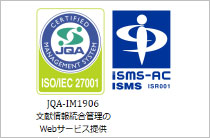ホームIMICライブラリMMWR抄訳2019年(Vol.68)死体固形臓器ドナーの特徴とB型、C型肝炎およびヒト・・・
2019/01/25Vol. 68 / No. 3
MMWR68(3):61-66
Characteristics of Deceased Solid Organ Donors and Screening Results for Hepatitis B, C, and Human Immunodeficiency Viruses — United States, 2010–2017
死体固形臓器ドナーの特徴とB型、C型肝炎およびヒト免疫不全ウイルス検査の結果 ― アメリカ、2010年~2017年
CDCは2010年~2017年の間にOrgan Procurement and Transplantation Networkに報告された死体ドナーのデータからその特徴を分析し、B型肝炎ウイルス(HBV)、C型肝炎ウイルス(HCV)およびヒト免疫不全ウイルス(HIV)感染リスクから増加リスクドナー(IRD)と標準リスクドナー(SRD)に分け、それぞれのウイルス検査の結果をまとめた。この期間における死体ドナーの数は2010年の7,943名から2017年には10,287名へ29.5%増加し、計70,414名であった。ドナーの平均年齢は39.9歳、男性59.6%、白人66.2%であり、57,782名(82.1%)はSRD、12,592名(17.9%)はIRD、40名(0.1%未満)はリスク不明に分類された。薬物中毒により死亡したドナー数は2010年の342名(4.3%)から2017年には1,382名(13.4%)に、静注ドラッグ使用者数は2010年の107名(1.3%)から2017年には825名(8.0%)に増加していた。B型肝炎表面抗原(HBsAg)陽性ドナーはこの期間一定であり(0.1%)、B型肝炎コア抗体(anti-HBc)陽性ドナーは2010年の5.0%から2017年には4.7%とわずかに減少、抗HCV陽性ドナーおよびHIV陽性ドナーはわずかに増加した(それぞれ4.2%から7.3%、0.0%から0.1%)。IRDは2010年:709名(8.9%)、2017年:2,704名(26.3%)と有意に増加(p<0.001)、平均年齢は35.2歳、男性:66.3%、白人:70.0%であり、HBsAg、anti-HBc陽性ドナーに有意な変動はなく、anti-HCV陽性ドナーは15.9%から21.6%に増加、また、2014年から2017年にかけてHCV RNA陽性ドナーは8.6%から15.7%に増加し、HBV、HCVおよびHIV のNAT(核酸検査)を受けたIRDはそれぞれ4.6%から99.9%超、4.6%から99.9%超、4.5%から99.9%超に増加し、HCV RNA陽性ドナーのうち55名(2014年:1名、2015年:9名、2016年:19名、2017年:26名)、5.3%がanti-HCV陰性であった。SRDは2010年7,226名(91.0%)、2017年7,580名(73.7%)であり、平均年齢は41.0歳、男性58.2%、白人65.4%であった。HBsAg陽性ドナーは2010年から2017年にかけて一定であり(0.1%)、anti-HBC陽性およびanti-HCV陽性ドナーはそれぞれ4.7%から3.9%、3.0%から2.2%へ減少し、2014年から2017年にかけてHCV RNA陽性ドナーは2.2%から1.1%へ減少した。HCV NATを受けたSRDは2014年3.4%から2017年100%に増加し、HCV RNA陽性ドナーのうち9名(2015年:4名、2016年:2名、2017年:3名)、3.5%はanti-HCV陰性であった。以上、SRDに比べIRDではHBV、HCVスクリーニング検査陽性ドナーが多く、死亡ドナーにおける病原菌ウイルス感染リスクの評価の重要性が示唆された。
References
- Seem DL, Lee I, Umscheid CA, Kuehnert MJ; Public Health Service. PHS guideline for reducing human immunodeficiency virus, hepatitis B virus, and hepatitis C virus transmission through organ transplantation. Public Health Rep 2013;128:247–343. <https://doi.org/10.1177/003335491312800403>
- Seth P, Scholl L, Rudd RA, Bacon S. Overdose deaths involving opioids, cocaine, and psychostimulants—United States, 2015–2016. MMWR Morb Mortal Wkly Rep 2018;67:349–58. <https://doi.org/10.15585/mmwr.mm6712a1>
- Volk ML, Wilk AR, Wolfe C, Kaul DR. The “PHS Increased Risk” label is associated with nonutilization of hundreds of organs per year. Transplantation 2017;101:1666–9. <https://doi.org/10.1097/TP.0000000000001673>
- Humar A, Morris M, Blumberg E, et al. Nucleic acid testing (NAT) of organ donors: is the ‘best’ test the right test? A consensus conference report. Am J Transplant 2010;10:889–99. <https://doi.org/10.1111/j.1600-6143.2009.02992.x>
- Delaney KP, Hanson DL, Masciotra S, Ethridge SF, Wesolowski L, Owen SM. Time until emergence of HIV test reactivity following infection with HIV-1: implications for interpreting test results and retesting after exposure. Clin Infect Dis 2017;64:53–9. <https://doi.org/10.1093/cid/ciw666>
- Ison MG, Llata E, Conover CS, et al.; HIV-HCV Transplantation Transmission Investigation Team. Transmission of human immunodeficiency virus and hepatitis C virus from an organ donor to four transplant recipients. Am J Transplant 2011;11:1218–25. <https://doi.org/10.1111/j.1600-6143.2011.03597.x>
- Suryaprasad A, Basavaraju SV, Hocevar SN, et al.; Organ Transplantation Hepatitis C Investigation Team. Transmission of hepatitis C virus from organ donors despite nucleic acid test screening. Am J Transplant 2015;15:1827–35. <https://doi.org/10.1111/ajt.13283>
- Reese PP, Abt PL, Blumberg EA, et al. Twelve-month outcomes after transplant of hepatitis C-infected kidneys into uninfected recipients: a single-group trial. Ann Intern Med 2018;169:273–81. <https://doi.org/10.7326/M18-0749>
- Saag MS, Benson CA, Gandhi RT, et al. Antiretroviral drugs for treatment and prevention of HIV infection in adults: 2018 recommendations of the International Antiviral Society–USA Panel. JAMA 2018;320:379–96. <https://doi.org/10.1001/jama.2018.8431>
- Terrault NA, Bzowej NH, Chang KM, Hwang JP, Jonas MM, Murad MH; American Association for the Study of Liver Diseases. AASLD guidelines for treatment of chronic hepatitis B. Hepatology 2016;63:261–83. <https://doi.org/10.1002/hep.28156>
Copyright © 2013 International Medical Information Center. All Rights Reserved.












